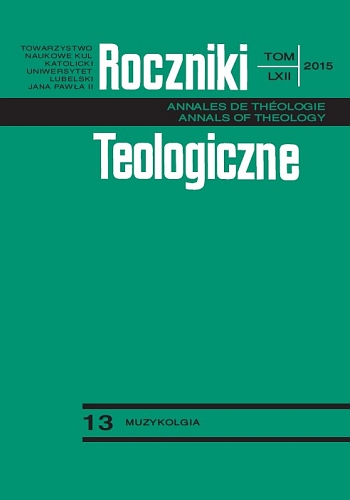Musical Works of Father Eustachius Wagner (1714–1782) from Krzeszów in the Light of The Litany in Honour of St. Joseph
Musical Works of Father Eustachius Wagner (1714–1782) from Krzeszów in the Light of The Litany in Honour of St. Joseph
Author(s): Łukasz KutrowskiSubject(s): Music, 18th Century
Published by: Towarzystwo Naukowe KUL & Katolicki Uniwersytet Lubelski Jana Pawła II
Keywords: Fr. Eustachius Wagner;Krzeszów;litany;St. Joseph;Cistercians;polyphony;classicism;
Summary/Abstract: Fr. Eustachius Wagner’s musical activities with his work as a composer is closely related to the musical and liturgical centre of the Cistercian abbey in Krzeszów. Accordingly, the music is inspired by the native trends. Furthermore, in terms of the music style, it refers to the period of the so-called Early Classicism, also called the pre-Classicism period. Fr. Eustachius Wagner lived between 1714–1782. He was born in Nowy Waliszów near Bystrzyca Kłodzka. He joined the Cistercian order in the monastery of Krzeszów, where he spent most of his life. He became famous as an excellent organist, cantor, conductor and composer. He used to collaborate with many other music centres in Silesia and in Europe. He composed polyphonically—for the purpose of the music band in Krzeszów—Marian antiphons, the Litany of Saint Joseph, Requiem Mass, and the offertory for the feast of Our Lady. Lytaniae ex D de Santco Jospeho was written between 1730 and 1782. It was earmarked for the band of Krzeszów on a four-voice choir, two violins, two trumpets and the organ. The litany consists of five parts, which differ among one another, primarily in terms of tone, tempo and arrangements. In order to highlight certain elements of the text, the composer applied various composition techniques, among which rhetorical figures deserve special recognition.
Journal: Roczniki Teologiczne
- Issue Year: 62/2015
- Issue No: 13
- Page Range: 89-112
- Page Count: 24
- Language: English

